Oriental Rugs and Rug Weaving in Nepal and Tibet
Tibetan and Nepalese Weaving in Nepal….
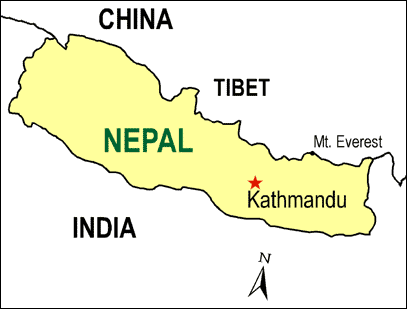
Nepalese Rugs….
Unfortunately, our enthusiasm for Tibetan rugs made in Nepal does not extend to most Nepalese types. In the 1960's, a European market developed for rugs from Nepal in simple, "modern" designs; such carpets continue to be extraordinarily popular in Germany, Switzerland, and Austria. There is often no sense of continuity between these rugs and earlier Tibetan weavings–designs are intended purely to find buyers in the market. These rugs have become a commodity, and there is constant pressure to produce them to sell for lower and lower prices. Most of this kind of production in Nepal is organized and owned by carpet people from India. Although made by hand, we regard these rugs as something akin to machine-made area rugs. We don't like them.
Tibetan Rugs from Nepal….
Most of this Tibetan production is in scatter sizes, although 8'x10' and 9'x12' carpets sometimes appear. The best of these rugs are still made the old fashioned way with totally handspun Tibetan yarn and vegetable dyes. These Tibetan rugs are thick and dense, with heavy, lustrous pile and deep, rich colors.
In all elements of design and construction Tibetan rugs are distinctly different from types made in other weaving areas. Tibetan rugs are woven by wrapping a continuous length of yarn over a rod laid across the warps stretched on the loom. When the rod has been wrapped for its entire length, a knife is slid along the rod, cutting the wrapped yarn into two rows of pile tufts.
The most commonly found grades of Tibetan rugs are "60", "80", and "100" knot qualities. However, the scale of the graphs from which these rugs are woven does not exactly match the physical arrangement of warps on the loom; there are fewer knots per sq. in. in the actual rug than the graph indicates. Thus a "60 knot" rug actually has about 32 knots per sq. in., an "80 knot" rug about 50 knots per sq. in., and a "100 knot" rug about 72 knots per sq. in.
We still see some few rugs in traditional Tibetan designs like these:
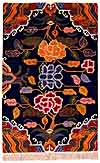
FLOWER design A common Tibetan design. |
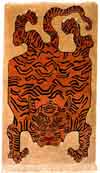
Flayed TIGER A common Tibetan design. |
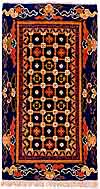
KHOTAN A design from Chinese Mongolia. |
But today Tibetan and Nepalese rugs most often look like this:
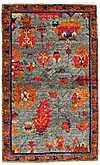
Modified PERSIAN design Wool on cotton: "60 knot" |
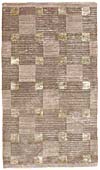
WOOL with SILK Wool and silk on cotton: "80 knot" |

PANEL Wool on cotton: "60 knot" quality |



